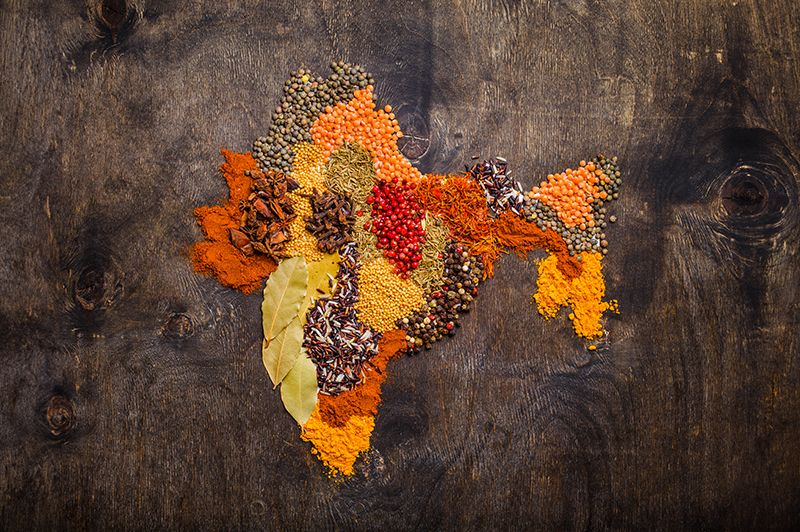Of the many things India is renowned for, perhaps the most beloved is the food. Rich curries, redolent with spices, fragrant rice dishes and indulgent milk-based desserts are what most people think of when imagining Indian food. And yet, like much about this country, Indian cuisine, too, is far more diverse than could be imagined. From the soaring mountains and the fertile plains in the north to the palm-tree lined coastlines down south, each region in India has its distinct cuisine, known as a “micro cuisine”, born out of cultural, climatic, and geographic nuances and prepared from the fresh ingredients available locally.

Home Grown Delights
So, what exactly is a micro cuisine? It’s a distinct, specialised culinary tradition, specific to smaller regions within a country or larger culinary culture. These cuisines encompass unique cooking techniques, ingredients, flavour profiles, and cultural influences that set them apart from broader national and regional cuisines. They reflect the unique traditions, ingredients, and flavours of different regions, and offer a glimpse into the intricacies of local life and the environment. From the aromatic flavors of Kashmiri Wazwan to the fiery delicacies of Chettinad cuisine, and from the simplicity of Himachali food to the symphony of Assamese flavours, every micro cuisine tells a unique story that tantalises the senses and ignites the imagination. It is when we discover such lesser-known culinary gems that we gain a deeper appreciation for the myriad ways in which food weaves together the fabric of Indian life.
The New Indian Diner
In India, we have seen a gradual evolution in dining choices – where the urban Indian once heavily favoured Western cuisines, more and more are now looking to explore the astonishingly wide variety that can be found within regional Indian preparations.
There are several factors that contribute towards this shift – a global move towards “slow food”; so named to juxtapose against fast food culture, lack of widespread access to affordable international ingredients, and, of course, a growing awareness of the nutritional benefits of eating seasonal, local produce. In fact, as per the 2022 Godrej Food Trends Report, there has been a 33% growth in preference for home-grown fruits and vegetables among Indian consumers. When paired with the desire to try something new or different and the marked proliferation of home chefs and small businesses tapping into the food delivery boom in recent years, it comes as no surprise that local cuisines are steadily growing more popular.
Future Focused
At Symega, we are inspired by the extraordinarily varied culinary traditions found in India, and the untapped potential for brands in these hyper-local food traditions. Engaging with micro cuisines in detail gives brands the ability to draw new ideas and product concepts, shine light on new flavours, and explore new and innovative uses of ingredients. Symega has always been committed to learning about diverse cuisines and culinary styles, and understanding the rich heritage of these cuisines in order to bring these new flavours to a broader audience. And with an in-depth understanding of the nuances of India’s micro cuisines, we continue to develop unique and inspired solutions that cater to the ever-evolving choices of today’s consumers.
For business enquiries or for more information, reach out to us at marketing@symega.com




